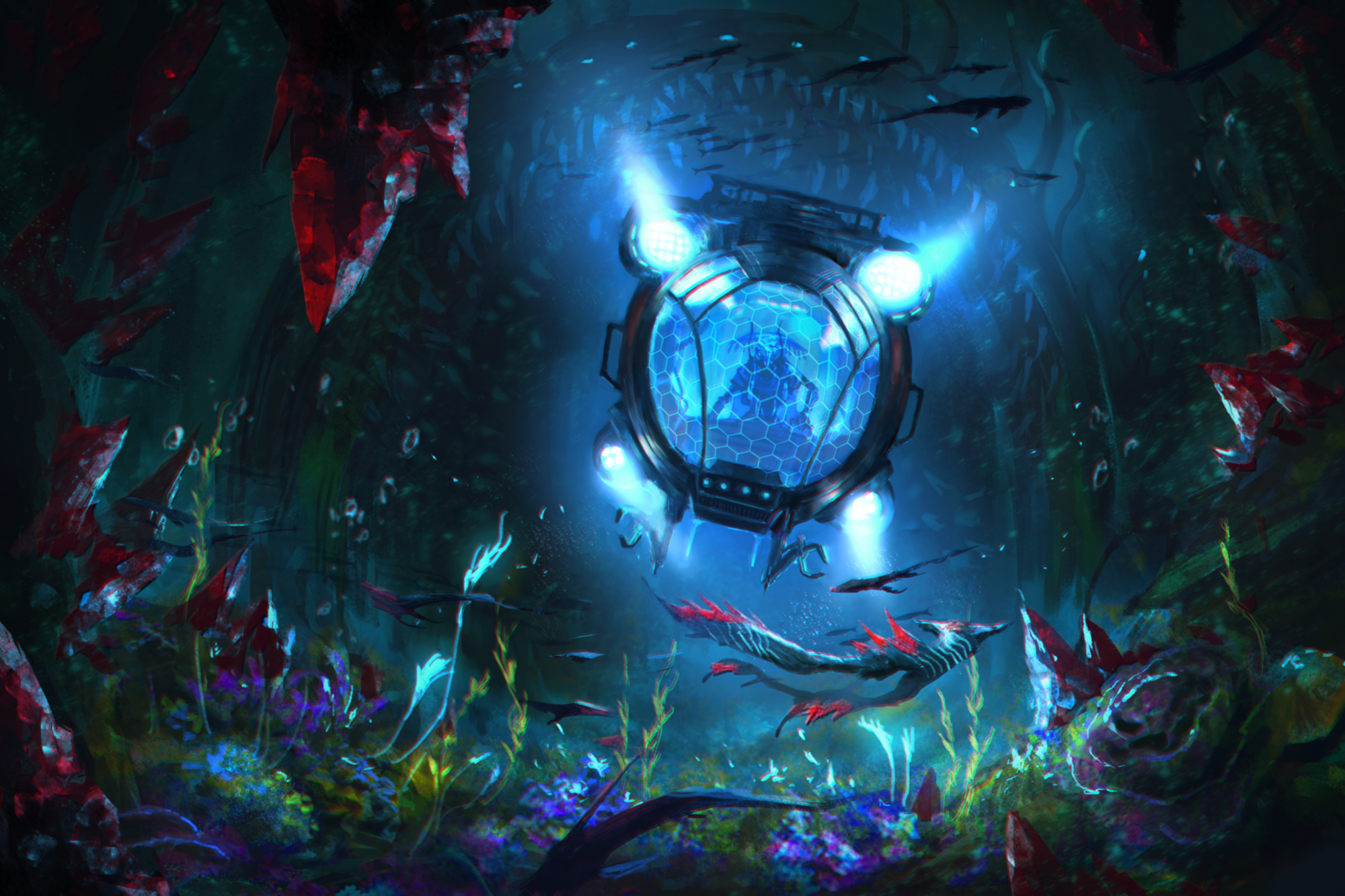The Starfinder Galaxy Exploration Manual offers a robust, yet simple system for generating entire science fantasy worlds on the fly, including populating them with creatures, adventures, and more. So let’s make ourselves a world, starting with nothing but our trusty dice and the two-page Building Worlds article in the Galaxy Exploration Manual.
For our first step, we’ll see what type of world we’re generating: is it a gas giant, an asteroid—even a colony ship? We roll 42 on our d% table and get… a terrestrial world, which is one that’s naturally habitable and has one or more biomes (coming in step 3). Not a bad place to start for most worlds, though we could always just choose something weirder if we wanted it.
Next, we’ll see what kind of gravity and atmosphere this world has by rolling d% twice more. Results of 42 and 84 give us standard gravity and a thick atmosphere, respectively. Handy page references guide us to the parts of the Starfinder Core Rulebook that’ll tell us more about thick atmospheres.
Next comes a key step: identifying our world’s biomes! What kinds of environments are present on this world? Do the creatures and cultures reside entirely in the air? In rugged mountains or soggy marshes? Let’s roll a d12 on the biomes table and find out! Our first roll is a 2, which gives us the aquatic biome. We could stop there and have a water world, but let’s roll a couple more times and see what else we get. Two more rolls (a 5 and a 10) add forest and subterranean biomes to the mix.

Illustration by Tuan Duong Chu
We’ll return to the biomes for more inspiration in a moment, but let’s fill in our world’s cultural attributes first. We roll a d6 six times and get a 1, 2, 3, 4, 5, and 6 (what are the odds?!). This tells us, respectively, that the world has low accord (meaning folks don’t much get along), a chaotic neutral alignment, medium magic, high religion, and high technology.
With that, we’re done generating the basics of our random world! But wait—there’s more! The next 80 pages of this book offer tons of flavor, adventure hooks, inhabitants, and player options tied to the biomes and cultural attributes we just generated. For now, let’s just use our aquatic biome and high technology attribute to get some more details about this place, shall we?
Turning to the aquatic biome, we find an inhabitants table, which has both sentient species (those likely to have cultures and settlements) and threats (those likely to attempt to eat or rearrange our faces). We roll d% a couple times for inhabitants, getting 42 and 84, and find that our sentient creatures are lacedon ghouls (chaotic evil aquatic undead) and stelliferas (diminutive cuttlefish-like creatures adapted to the deep sea)—no wonder they don’t get along! For our threat creatures, we roll again and get glass serpents and aquatic jubsnuths (bulbous predators with two mouths).
Our aquatic biome also has a wealth of adventure hooks, but let’s turn to the technology section and roll something from its adventure-hook tables instead! Rolling a 14 on the high-technology table gives us “a dangerous nanite malfunction threatens an entire world.” Uh oh! Did the nanites originate from the experiments of one of our aquatic species, or are perhaps some of our forest or subterranean dwellers to blame? Is our world’s atmosphere thick because it’s choked with nanites, or were the tiny robots originally made to clear the air? And what else is happening on this world? We could turn to any of our biomes or cultural attributes to get still more inspiration and adventure, but for the purposes of this blog, we’ll leave these mysteries to be solved.
Also, if we want to fill in details about settlements, NPCs, or the like, there are a number of toolboxes that will serve us well in chapter 3 of this very book!
Leave a comment if this world inspired any ideas of your own. And if you’ve already used the Galaxy Exploration Manual to create your own worlds, tell us about them!